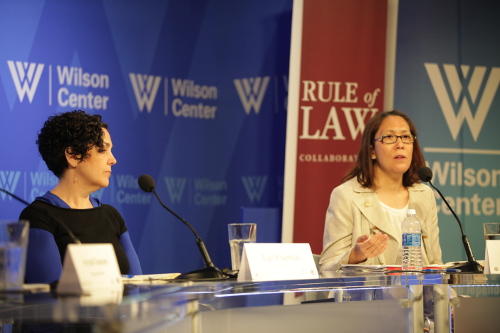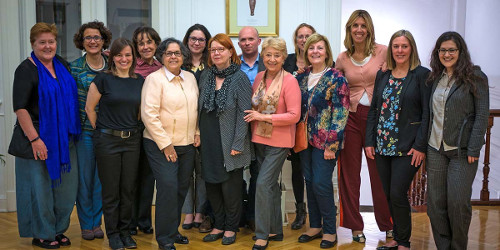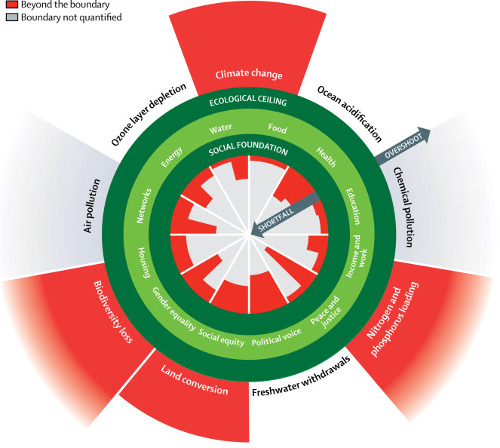The role of private enterprise and the rule of law was explored in a series of panel discussions at the Wilson Center in Washington DC on 17 May 2017. A range of expert panelists from across business and academia share their insights and initiatives, including Terry Jennings, Head of Rule of Law Development at LexisNexis Legal & Professional. Furthering the discourse on the rule of law is a vital component of SDG 16.3 to promote the rule of law at the national and international levels and ensure equal access to justice for all.
Gender InSITE is an international initiative to promote the role of women in science, innovation, technology and engineering - supporting the goal of SDG target 10, Reduced Inequalities. The Elsevier Foundation has been a long-time advisor and supporter of GenderInSITE, most recently providing a $40,000 grant for two thematic workshops in 2017: one addressing Latin America, exploring how a gender perspective in science education is indispensable to a sustainable development and the second in the South African region focusing on Gender and Innovation.
Elsevier,
Principles of Gender-Specific Medicine (Third Edition), Gender in the Genomic Era, 2017, Pages 733-741
The chapter explores gender-specific medicine. It advances SDG Goal, Gender Equality, by ensuring gender is considered in treatments of illness and disease.
Smart cities use data and technology to drive energy efficiency and are on the increase. The advantages of integrating energy efficient technologies into building planning and urban modelling are understood, but what are the risks? This article considers the threat of cyber crime on smart cities and the technology that these cities rely on, drawing out the links between SDG 7 and SDG 9. On the one hand, smart cities support the need for open data whilst on the other hand increased protection and security of that data will be required to avoid the threat of cyber attacks.
This chapter advances SDGs 3, 10, and 16 by focusing particularly on the evolutionary/cognitive explanations of racial categorization.
Neurochemical Aspects of Alzheimer's Disease Risk Factors, Pathogenesis, Biomarkers, and Potential Treatment Strategies, 2017, Pages 47-91
This book chapter advances SDG #3 and #10 by reviewing the risk factors for Alzheimer’s Disease, including normal aging, diet, sedentary lifestyle, sleep disturbances, genes [amyloid precursor protein (APP), presenilin 1 (PSEN1), PSEN2, and APOE], environmental factors, and epigenetic factors.
This paper analyzes the impact of data gap in Millennium Development Goals’ (MDGs) performance indicators on actual performance success of MDGs. Performance success, within the MDG framework, is quantified using six different ways proposed in the existing literature, including both absolute and relative performance and deviation from historical transition paths of MDG indicators. The empirical analysis clearly shows that the data gap in performance measurement is a significant predictor of poor MDG performance in terms of any of the six progress measures.
Innovative programs introduced in response to the Millennium Development Goals show promise to reduce the global rate of maternal mortality. The Sustainable Development Goals, introduced in 2015, were designed to build on this progress. In this article, we describe the global factors that contribute to maternal mortality rates, outcomes of the implementation of the Millennium Development Goals, and the new, related Sustainable Development Goals. Implications for clinical practice, health care systems, research, and health policy are provided.
It is no secret to anyone living in Beirut or a similar modern city in a semi-arid tropical country in the summer that their home has become a concrete forest and an urban heat island. Old wood or stone houses and their gardens have been replaced by concrete towers and parking lots, in the name of development. The result is searing summer nights, a drastic loss of insect and avian biodiversity, and a large increase in energy usage for interior climate control. These problems are experienced in rapidly developing urban centers worldwide.




